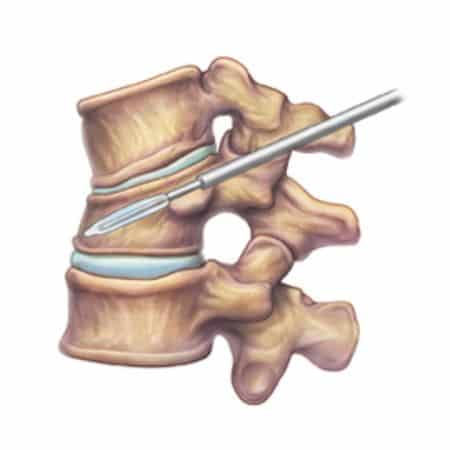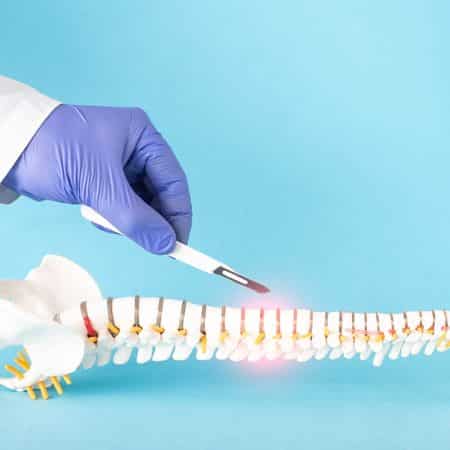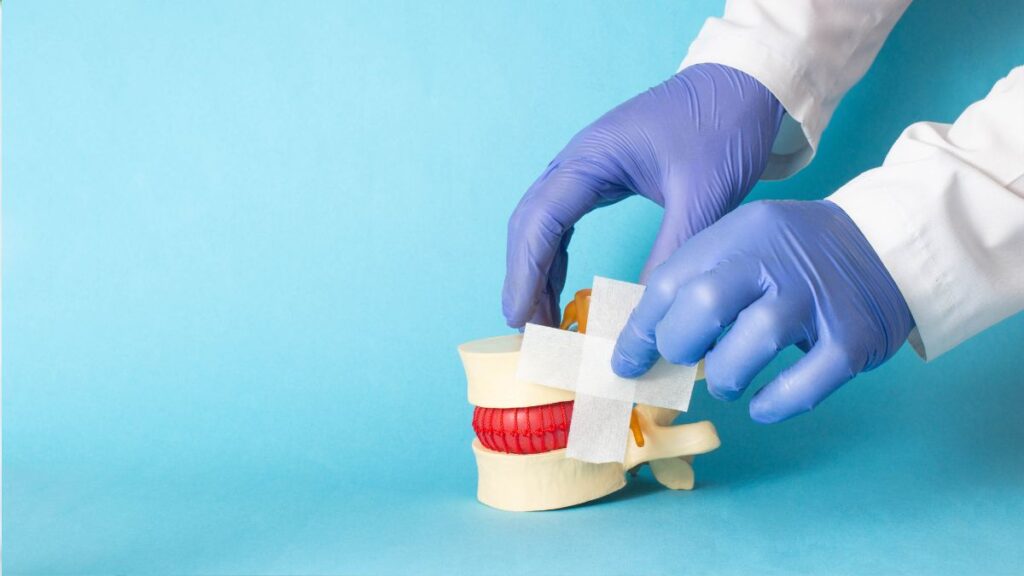Kyphoplasty/Vertebroplasty Chicago, IL
Home » Our Services and Treatments » Kyphoplasty / Vertebroplasty
The Condition: Spinal Fractures
Annually, in the United States, osteoporosis leads to over 700,000 spinal fractures, a number significantly surpassing that of hip fractures, as reported by the National Osteoporosis Foundation. These spinal fractures, often treated with kyphoplasty for compression fracture, can also result from cancers such as multiple myeloma, breast, lung, and prostate cancers. The Multiple Myeloma Research Foundation indicates that a substantial majority of multiple myeloma patients, approximately 70 to 95%, suffer from advanced metastatic bone disease, primarily in the spine, increasing the risk of fractures. Without timely intervention, these fractures can progress, potentially leading to kyphosis, a condition characterized by a rounded back, which can severely compress the chest and abdominal cavity, resulting in serious health complications.

Balloon Kyphoplasty Outcomes
In Chicago, balloon kyphoplasty is a minimally invasive orthopedic solution that stabilizes spinal fractures while effectively reducing pain and correcting vertebral deformity. This procedure, part of the vertebroplasty and kyphoplasty treatments, has been reported to offer several benefits:
- Restoration of vertebral body shape
- Considerable reduction in back pain
- Significant improvement in life quality
- Enhanced mobility, positively impacting daily life activities
- Reduction in bedrest days


The Balloon Kyphoplasty Procedure
The kyphoplasty surgery in Chicago involves:
- An incision, typically about ½ inch, is made at the site. Then, a needle and tube are used to create a small access point into the fractured bone.
- A tiny orthopedic balloon is placed through the tube into the vertebra.
- Inflating the balloon elevates the collapsed vertebra to its original position, thus creating a cavity within the vertebral body.
- After realignment, the balloon is deflated and removed, and the cavity is filled with bone cement to create an internal cast, supporting the bone and preventing further collapse.
- The procedure is usually conducted on both sides of the spine.
In Chicago, kyphoplasty surgery typically requires around one hour per fracture and may involve an overnight hospital stay. The type of anesthesia, local or general, is chosen based on the patient’s overall health condition. Medicare and most other insurance plans often cover this procedure.
Optimal Relief for Spinal Fractures
What Is Vertebroplasty?
Vertebroplasty in Chicago is a procedure designed to offer relief to patients with prolonged, debilitating pain from compression fractures in the spinal vertebrae. This treatment involves injecting bone cement into the vertebrae to stabilize the fractures. It results in notable pain relief and restoration of mobility for many patients, making it a crucial part of vertebroplasty for compression fractures in Chicago.


Recent Blogs
How Long Does Back Pain Last? Understanding the Duration and Seeking Help
What to Expect Following Spinal Cord Stimulator Implant Surgery
Can UTIs Lead to Back Pain?
Frequently Asked Questions
How long does it take to get over kyphoplasty?
Kyphoplasty is a minimally invasive procedure that can be performed in about an hour (per level) to treat a fracture. The recovery time is typically short, with most patients being able to return to their normal activities within a few days. However, in general, it depends on the extent of the fracture and the patient’s overall health.
What kind of anesthesia is used during the procedure?
During the kyphoplasty procedure, the surgeon will determine if local or general anesthesia is more appropriate for the patient based on the patient’s overall condition. Local anesthesia numbs the area around the fracture, while general anesthesia puts the patient to sleep. Either type of anesthesia can be used for the kyphoplasty procedure.
What are the benefits of kyphoplasty?
Kyphoplasty helps stabilize the spine and can relieve pain for patients who have suffered a vertebral compression fracture. The procedure can also help to improve the patient’s posture and prevent the fracture from getting worse. It further corrects the deformity caused by the fracture, which can help improve the patient’s quality of life.
What not do after kyphoplasty?
After kyphoplasty, it is important for the patient to avoid strenuous activity, bending, lifting, or twisting for at least six weeks. These activities can put undue pressure on the spine and may cause the fracture to worsen. It is also important that you regularly follow up with us to ensure that the fracture is healing properly.




